
Hands on Review: Fermonster Fermentors
Updated: January 13, 2025
This review is by Homebrew Finds Contributor Brad Probert. Brad is an engineer, expert homebrewer and experienced reviewer. Grab a link to Brad’s website at the end of this review.
Fermonster PET Fermentor
With all of the fermentor choices out on the market, there are plenty of good reasons to not be fermenting in that plastic bucket that came with your starter homebrew kit. Most of us make that realization when we can no longer fool ourselves into calling it “white”, and it carries the aroma of all the previous hop varieties it’s seen. PET Plastic fermentors are the logical next step up from the HDPE plastic buckets.
PET Is far less porous than HDPE. Because of that, it makes for a great oxygen barrier. As a material, HDPE passes through 50x the amount of oxygen over a given time than PET. So PET makes for better long ferments like if you’re lagering (or are just the forgetful type). Glass is an even better oxygen barrier, not allowing any oxygen to permeate it. But from a practical perspective, just like Coca-Cola figured out, glass is heavy and creates a nasty mess when you drop it. PET Is also cooler than that plastic bucket because the fermentor is clear, which allows you to view the exciting chemistry going on inside your brew.
The Fermonster comes in different sizes and options. They come as big as 7 gallons or as small as 1 gallon. And also intermediary sizes of 6 gallons and 3 gallons. You can get it without a spigot or with one if you want to do gravity beer transfers instead of using a siphon.
Limited Time DEAL
- MoreBeer offering 20% off a single item when you use coupon code TOP5
- *Code will not work with other coupon codes. Offer not valid on gift cards, items over $1000 or products already on sale & MAP products which have an indication on their product page. Single use per customer.
20% Off at MoreBeer! use coupon code TOP5
Fermonster Fermenters are included in the mix!
Compare Models and Prices, Review Continues Below
- Fermonster Fermenters and Accessories at MoreBeer
- Fermonster Fermenters and Accessories at William’s Brewing
- Fermonster Fermenters and Accessories at Amazon – Search “Fermonster – offerings vary
- Strange Brew Fermonster Pet Plastic 7 gal Homebrew Beer Making Carboy
- Vintage Shop – HOZQ8-1259 7 gal Fermonster Wide Mouth Carboy With #10 Drilled Stopper and Twin Bubble Airlock
- FerMonster 6 Gallon Fermenter
- 3 Gallon Fermonster Wide Mouth Plastic Fermenter with Spigot, Air Lock and Stopper
- FerMonster 1G Wine Mouth Plastic Carboy with #10 Drilled Bung and 3-Piece Airlock, Multicolor
- Fermonster 7 Gallon Wide Mouth Plastic Fermenter with Spigot, Stopper, & Air Lock
- Fermonster Fermenters and Accessories at eBay – Search Fermonster – offerings vary
- Fermonster Fermenters and Accessories at Great Fermentations
- Fermonster Fermenters and Accessories at Label Peelers
Hands on Review Fermonster Fermentors
The Fermonster has a great name. But it’s got more going for it than just that. Most notably is its large opening. PET Carboys give you all the advantages of PET (oxygen, weight, durability), but they can be a pain to clean fermentation residue out of. The Fermonster decided to deal with that constraint by putting a large 4” diameter screw-on lid that’s sealed by an o-ring captured in the lid. This large opening allows you to get inside easily and clean. It’s easily big enough to get your hand and forearm into, but I did find that reaching all the way to the bottom of the 7 gallon fermentor I was at my limit as it was a tight fit for my upper arm.
For cleaning, not being able to get to the very bottom doesn’t really matter, since all the crusties gather up top where yeast and dry hop residue dry out in the air. Also for ease of cleaning, the walls are smooth. This eliminates nooks and crannies to clean out after fermentation. And the smooth walls cleaned up easily with water and a sponge after fermenting.
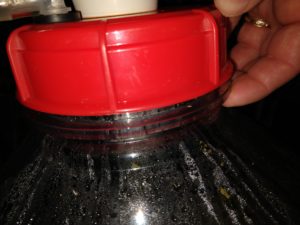 Lifting Ledge for Moving the Fermentor
Lifting Ledge for Moving the Fermentor
The smooth walls don’t allow a good grip on the outside when trying to lift or move your full fermentor. But at the top there is a beefy ledge that sticks out far enough that you can get a good grip with your fingers to move it around. Now this might sound insufficient, but I found it very easy to pull the fermentor up out of my fermentation insulating bag and carry it around using this ledge. Not as easy as a handle of course, but far better than any carboy I’ve had to move around (plastic or glass).
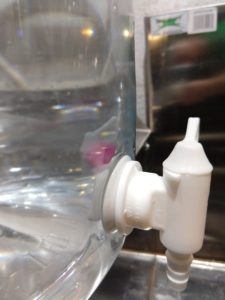 Fermonster Leak Free Spigot
Fermonster Leak Free Spigot
I got the fermentor with the spigot because the convenience of not having to clean and use my auto siphon sounded nice. I was concerned this would be a high likelihood source of leaks or weeping, but I had zero issues. I did have to experiment with where to put the rubber washer and in what orientation, but luckily I remembered that it’s best to figure that stuff out with 6 gallons of water rather than 6 gallons of wort! And although the spigot does stick out some, it’s relatively low profile. I was able to fit the fermentor and spigot into my BrewJacket insulated fermenting bag – Review – without issues. And the seal was so good that even after I accidentally rotated the spigot counterclockwise, loosening the nut on the inside, it didn’t leak a drop. I was quite impressed with how something that seemed so simple was somehow so robust.
Conclusions
Overall, the Fermonster worked well and did its job. Although there’s not a lot of exciting things you can say about a plastic jug, the small features show that it was designed with purposeful thought. And the leak-free spigot was a great option for gravity-fed transfers that kept the siphon tucked away in my cabinet.
Compare Models and Prices, Review Continues Below
- Fermonster Fermenters and Accessories at MoreBeer
- Fermonster Fermenters and Accessories at William’s Brewing
- Fermonster Fermenters and Accessories at Amazon – Search “Fermonster – offerings vary
- Strange Brew Fermonster Pet Plastic 7 gal Homebrew Beer Making Carboy
- Vintage Shop – HOZQ8-1259 7 gal Fermonster Wide Mouth Carboy With #10 Drilled Stopper and Twin Bubble Airlock
- FerMonster 6 Gallon Fermenter
- 3 Gallon Fermonster Wide Mouth Plastic Fermenter with Spigot, Air Lock and Stopper
- FerMonster 1G Wine Mouth Plastic Carboy with #10 Drilled Bung and 3-Piece Airlock, Multicolor
- Fermonster 7 Gallon Wide Mouth Plastic Fermenter with Spigot, Stopper, & Air Lock
- Fermonster Fermenters and Accessories at eBay – Search Fermonster – offerings vary
- Fermonster Fermenters and Accessories at Great Fermentations
- Fermonster Fermenters and Accessories at Label Peelers
More Photos
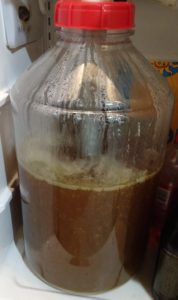 Clear walls allow observation of fermentation and cold crash progress
Clear walls allow observation of fermentation and cold crash progress
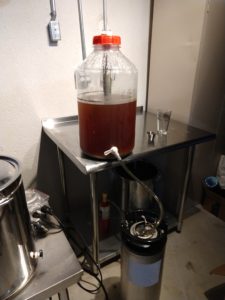 Siphonless gravity transfer from the Fermonster
Siphonless gravity transfer from the Fermonster
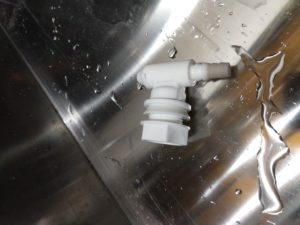 Fermonster spigot and seal
Fermonster spigot and seal
More Homebrew Finds!
- Last 50 Finds!
- Top Deals – a curated list of the best deals
- Homebrew Reviews – one of the largest libraries of homebrew reviews in existence!
- Our Top Posts – tips, how-tos, resources posts and more
More Fermenter Reviews!
Most Recent Deals
More Fermentation Related!
pinned
This post may contain affiliate links. We may make a commission when you use our links. This will never cost you extra. Thank you for supporting Homebrew Finds!
greatdealsBy Brad Probert. Check out Brad’s website – beersnobby.com
Special Thanks to MoreBeer for providing the unit used for evaluation in this review.
Price, promotions and availability can change quickly. Check the product page for current price, description and availability.
Make sure the components you use are compatible and rated for your intended application. Contact manufacturer with questions about suitability or a specific application. Always read and follow manufacturer directions. tag:lnksfxd review:fermonsterreview #tag:tpr

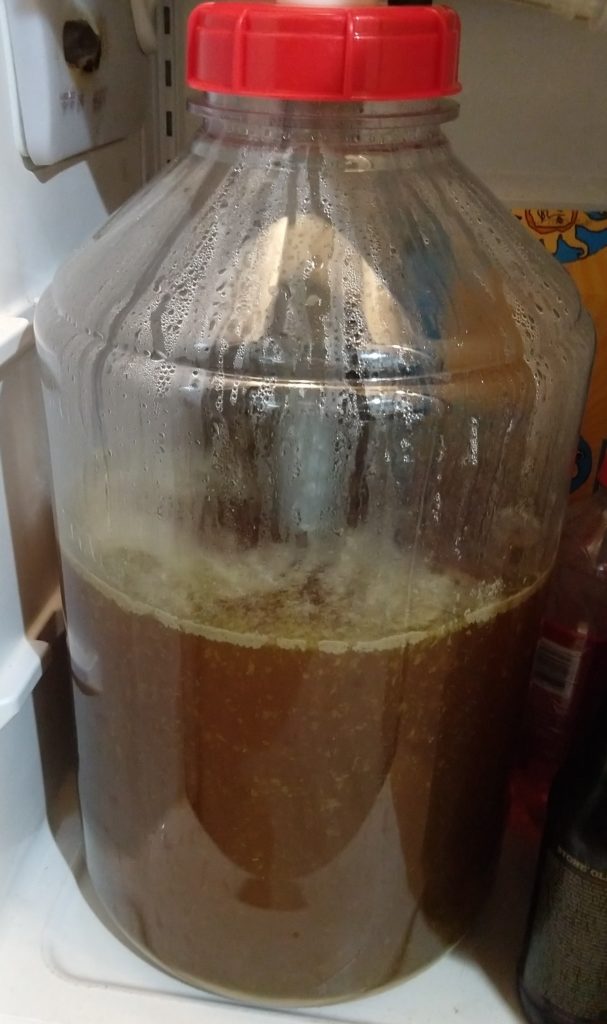







I own several of the large ones, but would not buy another. The PET is very smooth inside but it is also very thin. It dents very easily when lifting or tilting. I like to tilt it back when fermenting so everything will settle toward the rear. Then you can fill the keg until the fermenter is almost empty and then tip it forward to finish, The tipping often causes dents in the bottom rim. I would rather have the dimples in the plastic, like a BigMouth fermenter to stiffen it. Even turning the valve on or off causes quite a deflection in the wall.
I don’t know about everyone else, but I find it almost impossible to get a reliable seal on the lid. A very poor O ring seal that partially works … sometomes.
I love both of my Fermonsters, I have both 6&7 gallon,easy to clean,love watching,the fermentation process can’t beat them for the money,thanks MoreBeer!
I love the Fermonster with one exception – I have a hard time getting and keeping a good seal between the lid and the drilled stopper used for attaching an airlock. It seems that the hole in the lid is not perfectly round, so it allows some very small gaps between the stopper and the lid. If I had it to do over, I would consider getting a solid lid and drilling it myself to accept a rubber grommet for the airlock.
I’ve noticed the same, and I am considering getting a couple solid lids. I haven’t measured it myself but it appears slightly oval compared to the cork. It needs a bit of a push to get it to seal properly and needs to be checked after moving.
It would be nice to be able to get these with a solid lid instead of buying separately.
Otherwise, no complaints. I have 2 Fermonster minis (3 Gallon).
Great review. I’m getting ready to use my Fermonster and I had a question. Where did you end up putting the rubber washer and in what orientation? Thank you.
Thanks for the review. I’m considering making the switch from glass to PET carboys. Is it a hassle or difficult to clean/sanitize the cap with the o-ring? Do you need to remove the o-ring each time to ensure sterilization? If so, does this result in needing to replace the o-ring frequently due to damage?